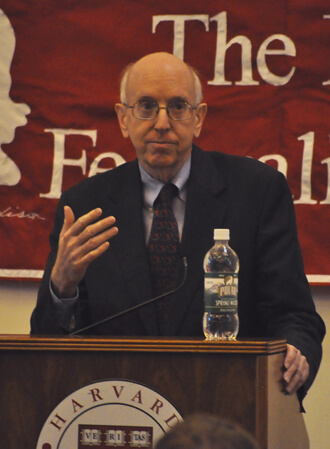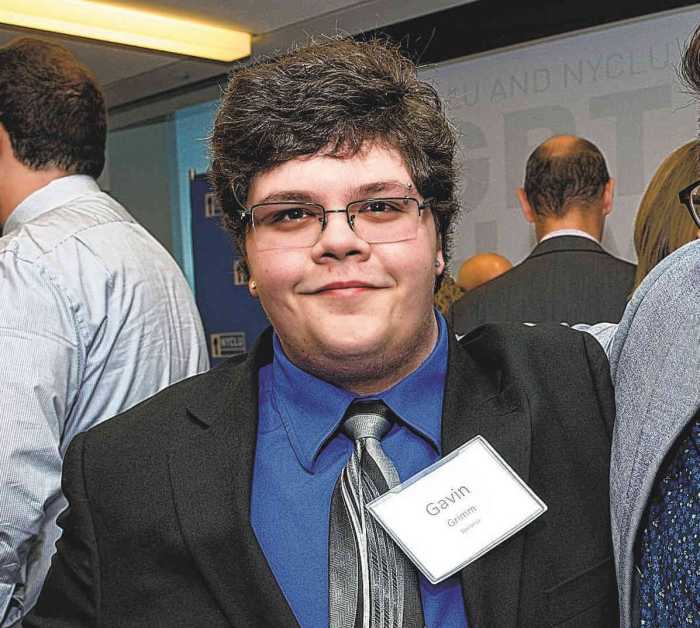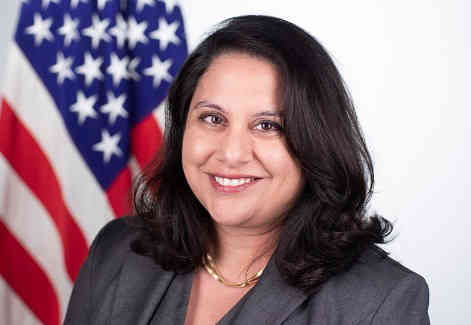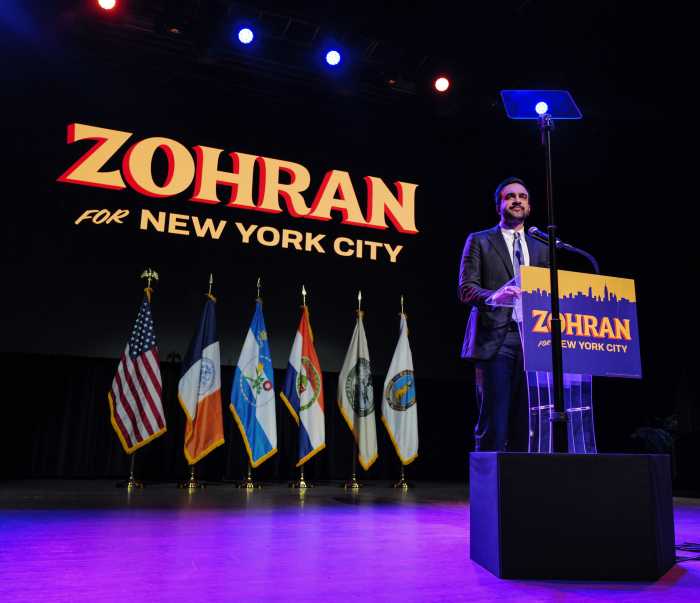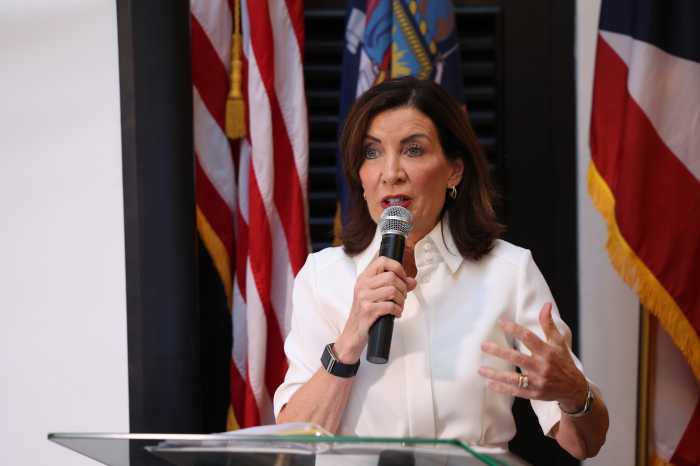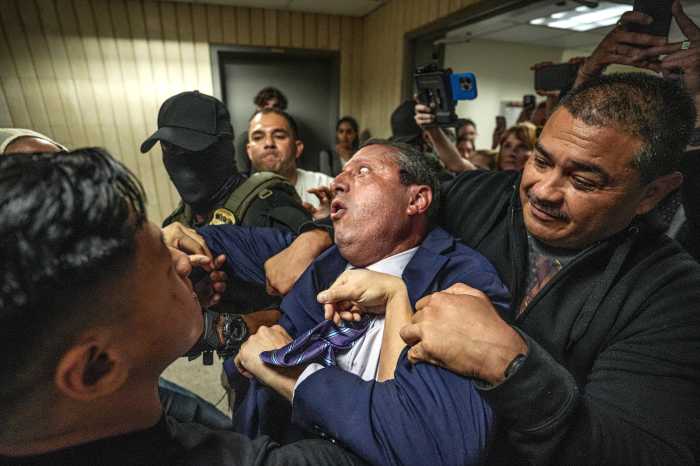Seventh Circuit Judge Richard Posner took a very tough approach to arguments by the states of Indiana and Wisconsin in defense of their same-sex marriage bans. | CHENSIYUAN/ WIKIMEDIA COMMONS
A panel of three judges of the US Seventh Circuit Court of Appeals, based in Chicago, gave a very rough time to attorneys representing the states of Indiana and Wisconsin during oral arguments in marriage equality appeals from those states.
The August 26 hearing involved three district court rulings out of Indiana and one from Wisconsin that all found the bans in both states on marriage by same-sex couples and recognition of valid marriages from elsewhere unconstitutional.
Indiana Solicitor General Thomas M. Fisher and Wisconsin Assistant Attorney General Timothy C. Samuelson probably anticipated tough questioning from the panel’s two Democratic appointees. Ann Claire Williams was nominated to the appeals court by President Bill Clinton, though she originally won a seat on the federal bench due to a Ronald Reagan appointment. David Hamilton was named to a federal district court seat by Clinton and nominated to the Seventh Circuit by Barack Obama.
One suspects, however, that Fisher and Samuelson did not count on getting the sort of tough cross-examination they got from Richard Posner, the most senior member of the panel who was appointed to the court by Ronald Reagan in 1981.
Posner, a father of a school of legal analysis known as the law-and-economics movement and a devoted empiricist, actually mocked the arguments he was getting from the state attorneys, though observers following the trend of marriage equality decisions over the past year might have predicted this result in light of his record of relentlessly pursuing facts and logic in his decisions. Referring to data showing that about 250,000 children nationwide are living with gay adoptive parents –– about 3,000 of them in Indiana, he noted –– Posner pressed Fisher to explain why Indiana would deny those children the same rights and security of having married parents that are accorded to the adopted children of married couples. The Indiana solicitor general could give him no real answer.
Wouldn’t it help those children, Posner asked, if their parents could marry? What’s better for the welfare of these children –– that their parents be allowed to marry or be prevented from marrying? Posner’s insistent questions followed up on Supreme Court Justice Anthony Kennedy’s comment in his opinion in last year’s Defense of Marriage Act case about the way denial of marriage to same-sex couples humiliates their children, who are being told by the state that their families are second class and not worthy of marriage.
In what was essentially the only justification offered for Indiana’s marriage ban, Fisher insisted on a state interest in making marriage available to different-sex couples so their children would be tied to their biological parents in stable families. But, having conceded that the state’s interest extended to the families in which children are raised, he could not satisfactorily answer questions from all three judges about how excluding same-sex couples from marriage advanced that interest. If you let gay people adopt, asked Posner, why not let their children have the same benefits?
Fisher’s response –– that same-sex couples can only have children by intentionally setting out to do so and don’t need to be “nudged” into marrying –– seemed puny. Posner pointed to the large number of children in foster care who needed adoptive parents and asked whether letting same-sex couples marry would lead to more adoptions. Fisher said he did not have knowledge on that point, but Posner, the law-and-economics expert, suggested it is less expensive for married couples than unmarried couples to adopt precisely because of all the benefits that accompany marriage.
Judge Hamilton, seizing upon an argument in Indiana’s brief claiming that the state’s marriage statute did not discriminate based on sexual orientation, seemed to throw Fisher into a panic by suggesting the state was therefore conceding that its marriage ban was based on a sex classification. Federal courts are divided on whether claims of sexual orientation discrimination are subject to heightened judicial scrutiny, but claims of sex discrimination are held to this standard under the Equal Protection Clause. Virtually all judges seem to agree that if heightened scrutiny is applied to bans on same-sex marriage, they are doomed to fail.
Samuelson, the Wisconsin assistant attorney general, did not fare much better in his argument. A number of courts have ruled the right to marry is a fundamental right that, under the Due Process Clause, cannot be denied to same-sex couples without a compelling rationale. But Samuelson contended that the Due Process Clause is a source of negative rights but not positive rights. He asked the court to consider whether Wisconsin is required to have a marriage law at all and argued that all the prior Supreme Court marriage cases –– as with interracial marriage bans –– were concerned with negative rights, not affirmative rights, in that the high court was striking down instances in which the state interfered with existing marriage rights. The judges did not seem impressed by this argument, giving it short shrift.
At one point during Samuelson’s argument, Posner truly cut to the chase. As the assistant attorney general went on at length about tradition and “Burkean values,” Posner finally asked, “Isn’t this based on hate?” and referred to a history of “savage discrimination” against gay people, including discrimination by government itself. Samuelson countered by pointing out that Wisconsin was the first state to pass a law banning discrimination based on sexual orientation in housing, employment, and public accommodations. Posner shot back, “Why draw the line there?” When Samuelson responded that this was a matter of “legislative policy,” Posner said, “Give me a rational basis for that legislative policy.” Samuelson could not.
The key thing that distinguished the Seventh Circuit arguments from the approaches taken by the Fourth and 10th Circuit Courts of Appeals, which ruled in favor of marriage equality earlier this summer, was that the judges here seemed more inclined to treat this as an equal protection case rather than one about a fundamental right to marry. They pressed the plaintiffs’ attorneys — Lambda Legal’s Camilla Taylor, the Indiana ACLU’s Kenneth Falk, and the National ACLU LGBT Rights Project’s James Esseks –– to articulate some principle that would set limitations on any purported constitutional right to marry. How would laws that forbid first-cousin marriages, incest, or polygamy fare under such an approach?
Esseks came back with the strongest answer, pointing to Justice Kennedy’s description of the liberty encompassed by the Due Process Clause in his opinion in the 2003 Texas sodomy case. Kennedy listed the right to select a marital partner as one of the fundamental rights within the scope of constitutionally-protected liberty and commented, to the outspoken chagrin of Justice Antonin Scalia, that gay people had the same liberty interest. Scalia’s dissent asserted that once the high court eliminates tradition and moral disapproval as grounds for adverse treatment of gay people, there seems no basis to deny them the right to marry. It is no small irony that Scalia’s bitter comment has been noted by many of the federal trial judges who have struck down marriage bans in recent months.
Given the judges’ extensive questioning about limiting principles appropriate to the question of a constitutional right to marry, it is significant that Judge Hamilton suggested that equal protection provided the stronger argument for plaintiffs, noting that the discriminatory purpose and effect of the marriage bans were clear.
Esseks made a strong pitch to the court for applying heightened scrutiny if the judges use an equal protection theory to decide the case, but the panel seemed unreceptive.
Judge Williams seemed to indicate that the concept of heightened scrutiny was not helpful. To her, the issue was whether the bans caused harm and if there were some balancing benefit to the state that justified that harm. Her questioning suggested she understood the harms very well and that the attorneys for Indiana and Wisconsin were unable to name any concrete benefits to offset them.
During Fisher’s brief rebuttal argument in the Indiana argument, Posner came back to his issue about children of adoptive parents, pushing the solicitor general again to give a reason for denying them benefits and asking how the marriage ban could possibly advance the state’s interests. He skeptically asked whether Fisher really believed that pushing heterosexuals to marry results in less extramarital sex, and he noted that sterile people are allowed to marry. The “channeling procreation” argument, in Posner’s view, is a ridiculous one.
Posner asked Fisher whether he had read the amicus brief filed by the Family Equality Council, which was devoted to relating the stories of harms incurred by children of same-sex couples who were not allowed to marry. Fisher claimed to have read it but not remembered it. Posner referred to the “harrowing information” about the misfortunes such children suffered and asked incredulously whether Fisher was not moved by that. He also asked whether Fisher had any empirical basis for anything he had said, in a voice dripping with sarcasm.
It is hard to imagine that either Indiana or Wisconsin is going to garner even one vote from this panel, if the judges act along the lines suggested by their questions and comments on August 26. The Seventh Circuit seems clearly poised to join the Fourth and the 10th in ruling for marriage equality.

